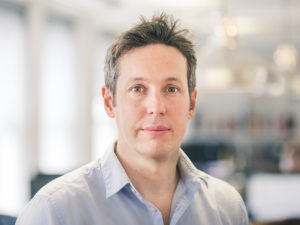Three Identical Strangers, one of the biggest documentary sensations of 2018, is an easy movie to recommend. However, it is a difficult film to write about, as so much of its emotional power comes from unexpected, and even devastating, story turns.
“I’ve been asking people not to talk about it,” says the film’s director, Tim Wardle.
That may be a high order for Canadian audiences, especially after the documentary has already been a film festival favourite at Sundance, where it won a special jury prize, and at Hot Docs in Toronto. (Three Identical Strangers opens in Toronto and Vancouver on July 13 before expanding to other Canadian cities this summer.)
However, it is not a spoiler to divulge some preliminary details, which are covered in the opening 10 minutes – and are, well, included in the film’s title.
The documentary’s opening section focuses on the reunion of identical Jewish triplets: Bobby Shafran, Eddy Galland, and David Kellman. They were born in Long Island, New York, on July 12, 1961, and were soon adopted by three different families.
They did not know of each other’s existence until 1980. When Bobby arrived at a community college in upstate New York, he was stunned to see many of the students welcome him enthusiastically, as if he was an old friend. They were mistaking him for Eddy, who had attended that college the previous year.
Soon, Bobby tracked down Eddy, and their reunion became headline news. The story escalated further when a newspaper photograph of the two brothers reached David’s adoptive mother, who got in touch with the other families.

For Wardle, the story was too good to pass up. He was working in development for a U.K.-based production company when documentarian Grace Hughes-Hallett brought in this idea.
“It was definitely the most amazing story I’d ever come across,” Wardle tells The CJN. “It worked on all these different levels. It’s a great human story… Then, you’ve also got these bigger thematic issues going on – free will, destiny, nature vs. nurture.”
As Wardle recalls, much of that pre-production work involved gaining the trust of the subjects and their families.
“It took about three to four years to fully get them on our side,” Wardle says. “When you see the film… you get a sense of why they might find it hard to trust people.”
READ: TORONTO FRINGE SHOW INVITES AUDIENCES INTO THE “MAN CAVE”
The film chronicles the growing fraternal bonds between the three men, alongside the media frenzy surrounding this miraculous revelation. Beyond the facial uncanniness, the brothers’ postures, mannerisms, vocal inflections, and even particular life experiences were bizarrely similar.
Wardle says that one of the joys of making Three Identical Strangers was the opportunity to partake in different forms of documentary filmmaking. There are lovely, personal interviews with two of the brothers and their families, alongside terrific reconstructions of the brothers’ freewheeling young adult years.
The opening sequence, a re-staging of Bobby’s arrival to the community college to discover that people were mistaking him for Eddy, was filmed in Hamilton, Ont.
Nevertheless, there are more unsettling details surrounding the reason for the brothers’ initial separation. It is due to those disturbing story developments – which I will not reveal – that Wardle says contemporary audiences do not know much about the brothers and their story.
As he explains, many non-fiction projects about the brothers, originally meant for TV audiences, were pulled by their broadcasters – possibly due to how certain authorities wanted to quell the story.
On a lighter note, Wardle says that making the film and showing it to audiences this year has helped to rekindle the bond between Bobby and David.
“They weren’t getting on particularly well while we were filming it,” Wardle explains, adding that their interviews were filmed separately. “They said that sharing [the documentary] with people has brought them closer.”
Three Identical Strangers opens this Friday in Toronto (Varsity) and Vancouver, and then opens in Montreal on July 20.






